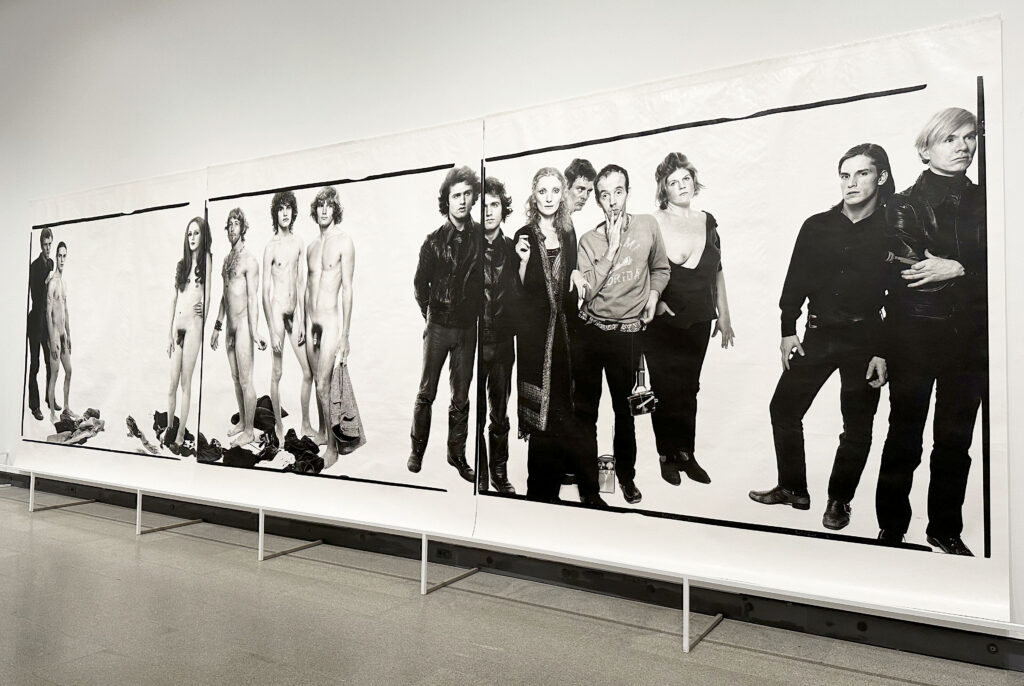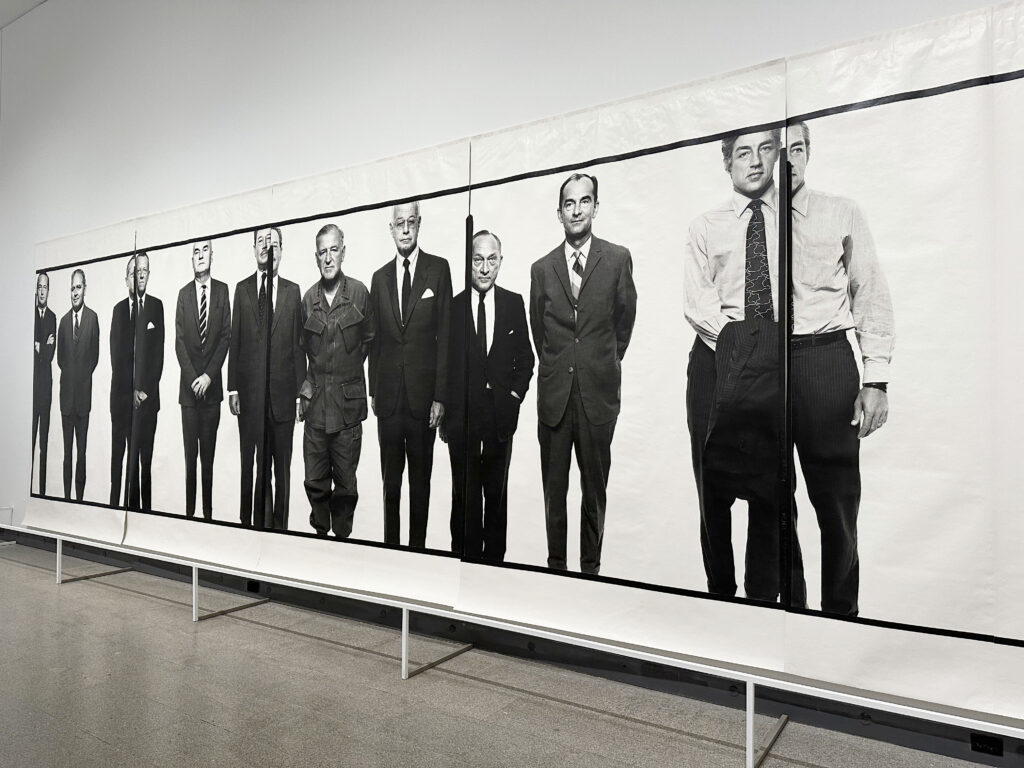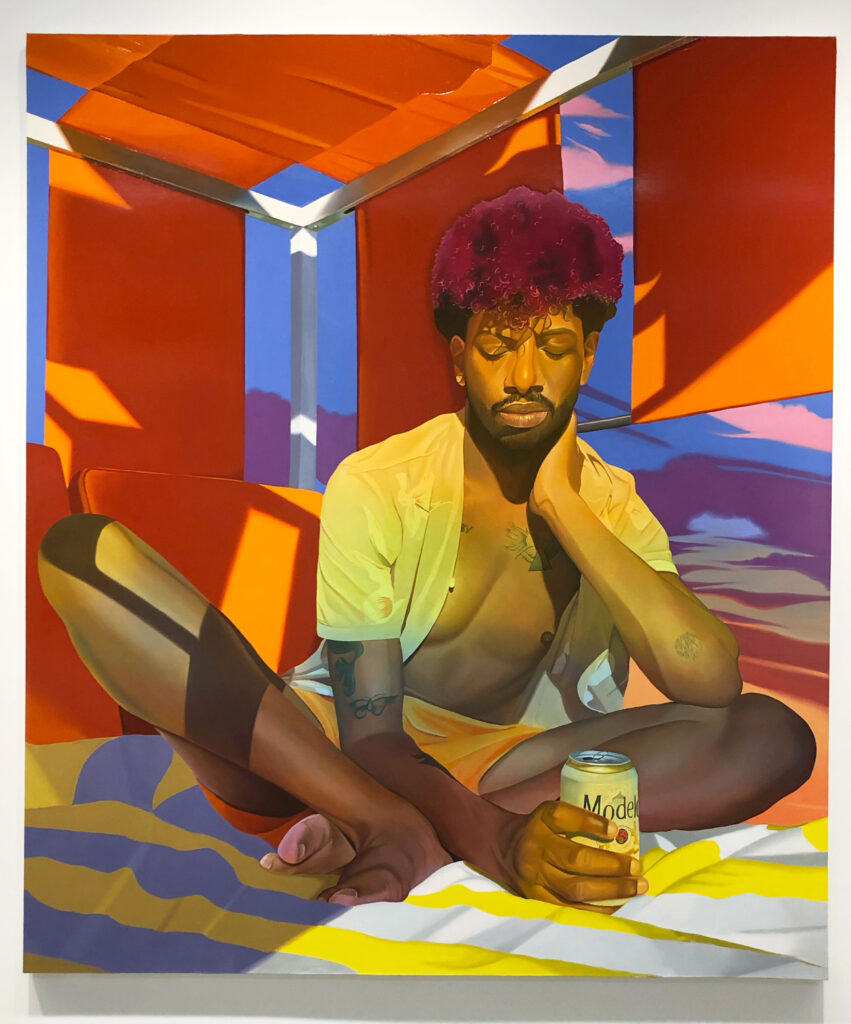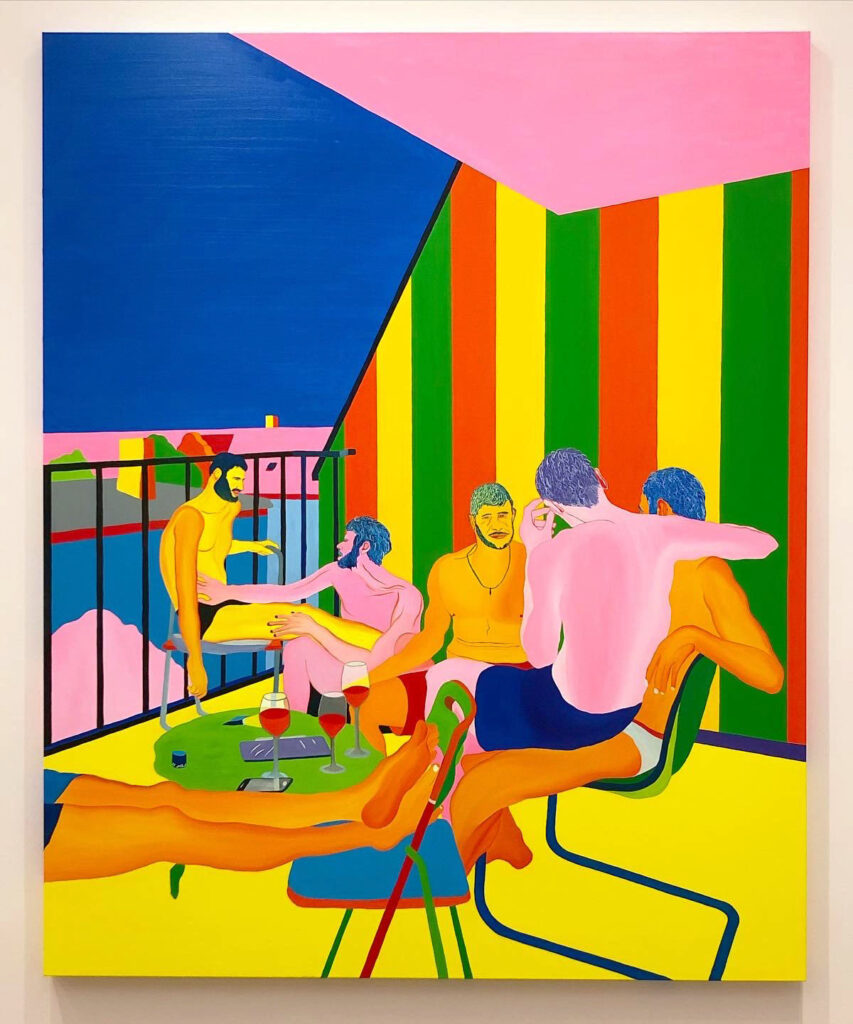

There are currently two exhibitions in New York celebrating Richard Avedon’s photography. At The Metropolitan Museum of Art is Richard Avedon: Murals. Pictured above are two of the large murals included. The first is of Andy Warhol and members of The Factory and the other is of members of the Mission Council in Saigon.
From The Met’s website about the show-
In 1969, Richard Avedon was at a crossroads. After a five-year hiatus, the photographer started making portraits again, this time with a new camera and a new sense of scale. Trading his handheld Rolleiflex for a larger, tripod-mounted device, he reinvented his studio dynamic. Instead of dancing around his subjects from behind a viewfinder, as he had in his lively fashion pictures, he could now stand beside a stationary camera and meet them head-on. Facing down groups of the era’s preeminent artists, activists, and politicians, he made huge photomural portraits, befitting their outsized cultural influence. On the centennial of the photographer’s birth, Richard Avedon: MURALS will bring together three of these monumental works, some as wide as 35 feet. For Avedon, the murals expanded the artistic possibilities of photography, radically reorienting viewers and subjects in a subsuming, larger-than-life view.
The murals are society portraits. In them, Avedon assembles giants of the late twentieth century—members of Andy Warhol’s Factory, architects of the Vietnam war, and demonstrators against that war—who together shaped an extraordinarily turbulent era of American life. Presented in one gallery, their enormous portraits will stage an unlikely conversation among historically opposed camps, as well as contemporary viewers. The formal innovations of Avedon’s high style—of starkly lit bodies in an unsparing white surround—are best realized in these works, where subjects jostle and crowd the frame, and bright voids between them crackle with tension. Uniting the murals with session outtakes and contemporaneous projects, the exhibition will track Avedon’s evolving approach to group portraiture, through which he so transformed the conventions of the genre.
About Andy Warhol and members of The Factory–
Avedon fantasized about throwing an annual fete for New York society and watching the group evolve over time. This mural is his downtown take on such a party, featuring a new “smart set” of sexual revolutionaries. They were affiliated with Andy Warhol’s Factory, the studio and gathering place for a coterie of avant-garde filmmakers, artists, and socialites. Avedon summoned them to his own studio, where they met over a series of weeks. Working in his most directorial mode, he arranged his subjects—including transgender actress Candy Darling and adult film star Joe Dallesandro—in a lateral frieze across adjoining frames, the fracture and repetition of their bodies in space suggesting the filmic passage of time.
The culmination of much trial and error, the mural’s composition took time to perfect, as evidenced by session outtakes displayed nearby. Avedon later praised the professionalism of his cast but joked, “You couldn’t keep the clothes on anybody in those years. . . . Before you could say ‘hello,’ they were nude and ready to ride.” If this unabashed undress tests gallery decorum, it is a provocation grounded in art history: in the central panel Avedon presents a male version of the “three graces,” riffing on a gendered tradition in allegorical painting with an ironic, Warholian wink.
About The Mission Council, Saigon, South Vietnam–
Avedon knew he would have mere minutes to photograph the U.S. generals, ambassadors, and policy experts who ran the war in Vietnam—not the weeks he spent refining his first mural. Planning in advance, he requested the heights of the men known collectively as the Mission Council and mapped out their positions, with careful attention to rank and influence. He rigged a makeshift studio at the embassy in Saigon, and recalled that once assembled, they “lined up like high school boys. They all wanted to be in the picture.” This is true of all but Ted Shackley, the camera-averse CIA station chief known to colleagues as the Blond Ghost, who begged out of the sitting for “a meeting,” leaving a void in the rightmost panel.
As blunt and procedural as a police lineup, the mural recalls Avedon’s first photography gig as a teenager in the Merchant Marine, where he made mugshot-style portraits of new recruits. Here, scrutinizing the faces of the war’s top brass, Avedon invokes their unseen operatives and victims. When the work was later published, one critic deemed it “a terrifying picture of business as usual.”
This exhibition closes 10/1/23.
For a more comprehensive look at Avedon’s career, Gagosian’s Chelsea location is showing Avedon 100, “a collection of Avedon photographs was selected by more than 150 people—including prominent artists, designers, musicians, writers, curators, and fashion world representatives—who elaborate on the impact of the photographer’s work today.”
The gallery’s website has a video of the installation that is well worth checking out, especially if you can’t see the exhibition in person.
This exhibition will close on Friday, 7/7/23.




















